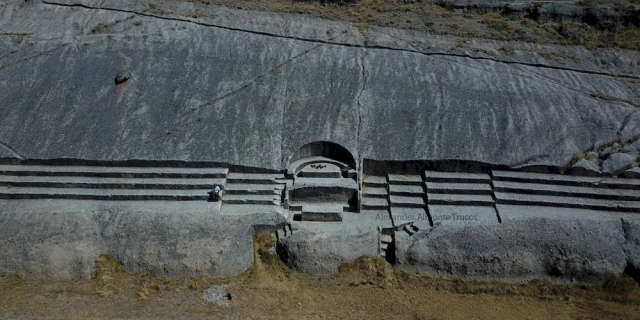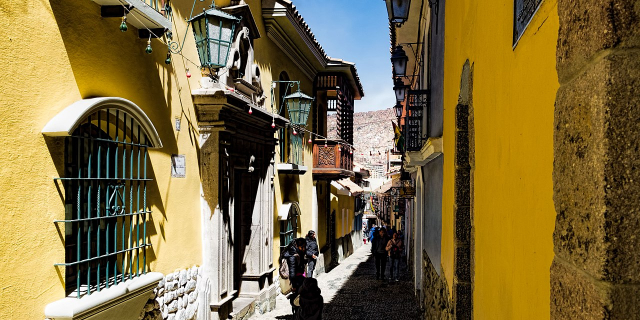Lake Titicaca (; Spanish: Lago Titicaca [ˈlaɣo titiˈkaka]; Quechua: Titiqaqa Qucha) is a large freshwater lake in the Andes mountains on the border of Bolivia and Peru. It is often called the highest navigable lake in the world. By both the volume of water and surface area, Titicaca is the largest lake in South America.
Lake Titicaca has a surface elevation of 3,812 m (12,507 ft). The "highest lake" claim is generally considered to refer to commercial craft. Numerous smaller lakes around the world are at higher elevations. For many years, the largest vessel afloat on the lake was the 2,200-ton (2,425 U.S. tons), 79 m (259 ft) SS Ollanta. Today, the largest vessel is most likely the similarly sized train barge/float Manco Capac, operated by PeruRail.
 SS Yavari in Puno, 2002
SS Yavari in Puno, 2002The lake has had a number of steamships, each of which was built in the United Kingdom in "knock down" form with bolts and nuts, disassembled into many hundreds of pieces, transported to the lake, and then riveted together and launched.
In 1862 Thames Ironworks on the River Thames built the iron-hulled sister ships SS Yavari and SS Yapura under contract to the James Watt Foundry of Birmingham.[1] The ships were designed as combined cargo, passenger, and gunboats for the Peruvian Navy.[1] After several years' delay in delivery from the Pacific coast to the lake, Yavari was launched in 1870 and Yapura in 1873.[1] Yavari was 30 m (100 ft) long, but in 1914 her hull was lengthened for extra cargo capacity and she was re-engined as a motor vessel.[1]
In November 1883, during the final phase of the War of the Pacific, the Chilean military command sent the Chilean torpedo boat Colo Colo to the lake, via railroad, from Mollendo to Puno to control the area.[2][3] It was the first warship to navigate the lake.[4]
In 1892, William Denny and Brothers at Dumbarton on the River Clyde in Scotland built SS Coya.[5] She was 52 m (170 ft) long and was launched on the lake in 1893.[5]
In 1905, Earle's Shipbuilding at Kingston upon Hull on the Humber built SS Inca.[6][7] By then, a railway served the lake, so the ship was delivered in kit form by rail.[7] At 67 m (220 ft) long and 1,809 tons (1,994 U.S. tons), Inca was the lake's largest ship thus far.[7] In the 1920s, Earle's supplied a new bottom for the ship, which also was delivered in kit form.[7]
Trade continued to grow, so in 1930, Earle's built SS Ollanta.[6][7] Her parts were landed at the Pacific Ocean port of Mollendo and brought by rail to the lake port of Puno.[7] At 79 m (260 ft) long and 2,200 tons (425 U.S. tons), she was considerably larger than the Inca, so first a new slipway had to be built to build her.[7] She was launched in November 1931.[7]
In 1975, Yavari and Yapura were returned to the Peruvian Navy, which converted Yapura into a hospital ship and renamed her BAP Puno.[1] The Navy discarded Yavari, but in 1987, charitable interests bought her and started restoring her.[1] She is now moored at Puno Bay and provides static tourist accommodation while her restoration continues.[1] Coya was beached in 1984, but restored as a floating restaurant in 2001.[6] Inca survived until 1994, when she was broken up.[6] Ollanta is no longer in scheduled service, but PeruRail has been leasing her for tourist charter operations.[8]































Add new comment